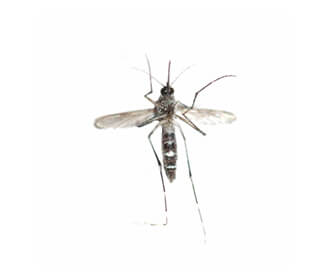© 2024 Rentokil Initial plc and subject to the conditions in the Legal Statement.
Get in Touch
Contact an Expert
For Your Business
Customised, industry-specific treatments to eliminate mosquitoes with minimum disruption
There are many species of mosquitoes, which can be found all around the world. The female species is responsible for the irritating bites we suffer from and these bites can also carry fatal diseases.
Read more about the lifecycles and habits of different types of mosquitoes below.

(Anopheles SPP.)
The Anopheles mosquito is responsible for transmitting malaria.

(Aedes Aegypti)
The bites from an Aedes mosquito peak at the change of light intensity (after sunrise and before sunset).

(Culex Tritaeniorhynchus)
Culex mosquitoes are the main vector for Japanese B – Encephalitis

(Culicoides impunctatus)

(Family Sciaridae)
The Dark Winged Fungus Gnat can cause damage to the root of plants.
Get safe, professional targeted treatments to quickly remove mosquitoes